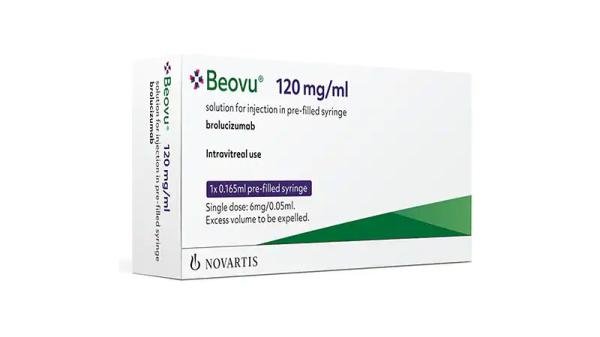Brolucizumab Side Effects
Medically reviewed by Drugs.com. Last updated on Jan 19, 2024.
Applies to brolucizumab: intraocular solution.
Serious side effects of Brolucizumab
Along with its needed effects, brolucizumab may cause some unwanted effects. Although not all of these side effects may occur, if they do occur they may need medical attention.
Check with your doctor or nurse immediately if any of the following side effects occur while taking brolucizumab:
More common
- Blindness
- bloody eye
- blurred vision
- decreased vision
- redness of the eye
Less common
- Burning, dry, or itching eyes
- discharge, excessive tearing
- headache
- other changes in vision
- painful irritation of the clear front part of the eye
- redness of the white part of the eyes or inside of the eyelids
- redness, pain, swelling of the eye, eyelid, or inner lining of the eyelid
- seeing flashes or sparks of light
- seeing floating spots before the eyes, or a veil or curtain appearing across part of vision
- tearing of the eyes
Other side effects of Brolucizumab
Some side effects of brolucizumab may occur that usually do not need medical attention. These side effects may go away during treatment as your body adjusts to the medicine. Also, your health care professional may be able to tell you about ways to prevent or reduce some of these side effects.
Check with your health care professional if any of the following side effects continue or are bothersome or if you have any questions about them:
Less common
- Seeing floating dark spots or material before eyes
For Healthcare Professionals
Applies to brolucizumab: intravitreal solution.
General
The most commonly reported adverse reactions have included blurred vision, cataract, conjunctival hemorrhage, eye pain, and vitreous floaters.[Ref]
Ocular
Very common (10% or more): Blurred vision
Common (1% to 10%): Cataract, conjunctival hemorrhage, vitreous floaters, eye pain, intraocular inflammation, increased intraocular pressure, retinal hemorrhage, vitreous detachment, conjunctivitis, retinal pigment epithelial tear, corneal abrasion
Uncommon (0.1% to 1%): Blindness, punctate keratitis, retinal tear, endophthalmitis, retinal artery occlusion, retinal detachment, conjunctival hyperemia, lacrimation increased, abnormal sensation in the eye, detachment of retinal pigment epithelium[Ref]
Blurred vision was reported in 10% of patients and included the following events: vision blurred, visual acuity reduced, visual acuity reduced transiently and visual impairment. Intraocular inflammation was reported in 4% of patients and included the following events: anterior chamber cell, anterior chamber flare, anterior chamber inflammation, chorioretinitis, eye inflammation, iridocyclitis, iritis, uveitis, vitreous haze, vitritis. Blindness was reported in 1% of patients and included the following events: blindness, blindness transient, amaurosis, and amaurosis fugax.[Ref]
Cardiovascular
Common (1% to 10%): Arterial thromboembolic events[Ref]
In the two 96-week controlled clinical trials in neovascular age-related macular degeneration, the ATE rate in the pooled brolucizumab arms was 4.5% (33/730) compared with 4.7% (34/729) in the pooled aflibercept arms. Arterial thromboembolic events were defined as nonfatal stroke, nonfatal myocardial infarction, or vascular death (including deaths of unknown cause).[Ref]
Hypersensitivity
Common (1% to 10%): Hypersensitivity
Hypersensitivity included urticaria, rash, pruritus, and erythema.
Immunologic
Pretreatment anti-brolucizumab antibodies were detected in 36% to 52% of treatment naive patients. After dosing, anti-brolucizumab antibodies were detected in 53% to 67% of patients. Intraocular inflammation was observed in 6% of patients with anti-brolucizumab antibodies. The significance of anti-brolucizumab antibodies on safety and efficacy is unknown. As with all therapeutic proteins, the detection of an immune response is highly dependent on the sensitivity and specificity of the assay, sample handling, timing of sample collection, concomitant medications, and underlying disease. Comparing the incidence of antibody formation to other products may be misleading.[Ref]
Very common (10% or more): Anti-drug antibodies[Ref]
Frequently asked questions
- Does Beovu help with wet AMD?
- What is brolucizumab used for and how does it work?
- How is brolucizumab administered?
More about brolucizumab
- Compare alternatives
- Reviews (3)
- Dosage information
- Patient tips
- During pregnancy
- Drug class: anti-angiogenic ophthalmic agents
- Breastfeeding
- En español
Patient resources
Other brands
Professional resources
Other brands
Related treatment guides
References
1. Product Information. Beovu (brolucizumab ophthalmic). Novartis Pharmaceuticals. 2019.
Further information
Always consult your healthcare provider to ensure the information displayed on this page applies to your personal circumstances.
Some side effects may not be reported. You may report them to the FDA.

